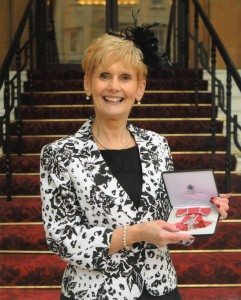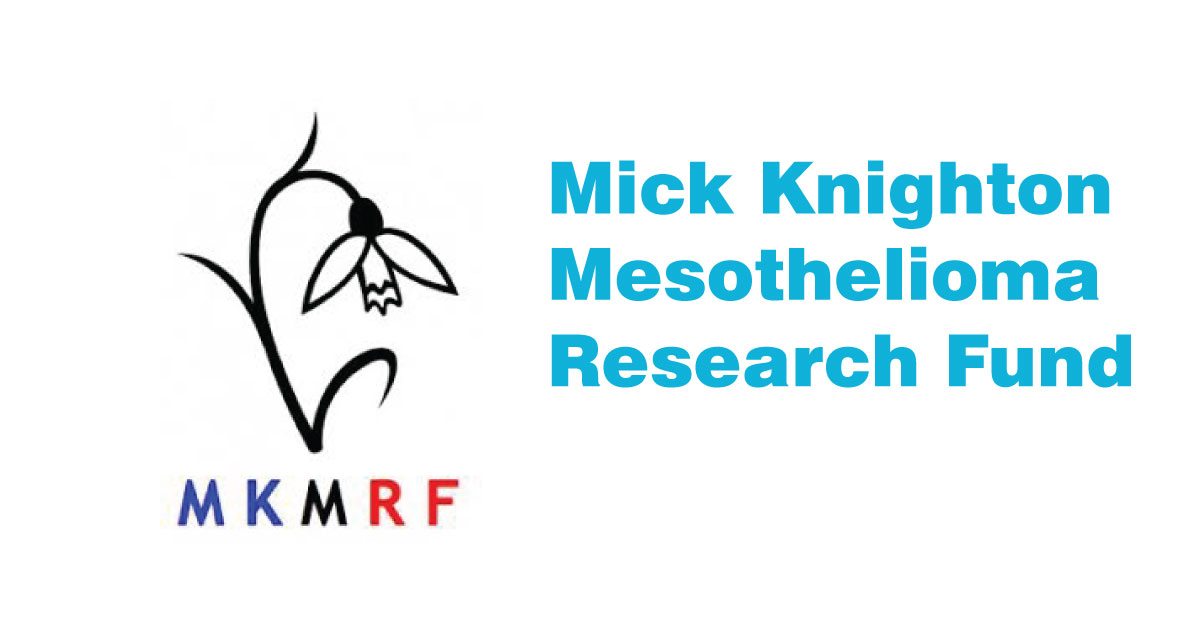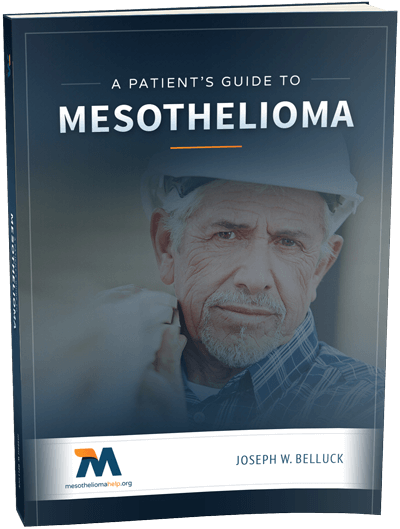Mesothelioma Help Cancer News

Part II: Chris Knighton Promised to Fight for Mesothelioma Victims
After she lost her husband to mesothelioma, Chris Knighton formed the Mick Knighton Mesothelioma Research Fund to help find a cure for the asbestos-caused disease. In Part II of this series, see how Chris’s efforts earned her a Royal award.
Support Groups and The Snowdrop Memorial
In addition to funding research, the MKMRF offers support groups for anyone who has been touched by mesothelioma. The Mesothelioma Self-help/Friendship Groups provide information and support to sufferers and their families. The groups meet once a month and welcome all whose lives have been affected by mesothelioma.
“We understand how important it is to meet others, and to share experiences, as well as having some fun along the way,” said Chris.
Another way to bring families together has been through the Snowdrop Fund. Chris created the fund to raise money, but also as a lasting tribute to loved ones. Families can set up Snowdrop Funds in memory of a loved one through the MKMRF website, and friends and families can make donations to MKMRF in memory of that person.
Often described as looking like three drops of milk hanging from a stem, snowdrop flowers, according to Chris, “work hard through the depth of winter; then come spring they bloom, bringing hope and promise for a better future.”
As part of the launch of the Snowdrop Memorial Fund, North Tyneside Council and Gateshead Council agreed to plant 5,000 snowdrops along the banks of the Tyne River in North East England, where thousands of people were previously exposed to asbestos.
Treasured Experience
Chris’s resolve to bring an end to deaths from mesothelioma earned her one of the highest honors for an English citizen – Member of the Order of the British Empire (MBE) Award. This is awarded for a significant achievement or outstanding service to the community. An MBE is also awarded for local ‘hands-on’ service which stands out as an example to other people.
“This is truly a treasured experienced,” said Chris upon receipt of the award by Her Majesty the Queen at Buckingham Palace last November.
Although humbled by the honor, Chris has no plans to give up on her quest to help find a cure for mesothelioma.
“For the first time ever, there is much to be positive about in terms of mesothelioma research; therefore MKMRF will continue to raise much needed funding in the hope of delivering real advances into treatment and understanding of the disease.”
Make a donation or find out more about Chris and the Mick Knighton Mesothelioma Research Fund.
See Part I of Chris Knighton’s fight for Mesothelioma Victims posted last week.

Part I: Chris Knighton, Founder of the Mick Knighton Mesothelioma Research Fund, Vows to Fight for All Mesothelioma Victims
Many people who lose a loved one to mesothelioma take the time to mourn, but then they get on with their lives. Not Chris Knighton. After her husband died from mesothelioma, Chris vowed that Mick’s death would not be in vain. Just one year later, Chris formed the Mick Knighton Mesothelioma Research Fund and has dedicated her life to helping fund research to find a cure for the deadly disease.
In 2000, Mick, a seemingly healthy, fit 59-year-old husband, father and grandfather, was enjoying spending time with his family and traveling Europe and the English countryside when he began having difficulty breathing. One month later, he was diagnosed with the asbestos-caused cancer and was told there were “no treatments, no cure, and no hope” for saving his life. He was given just six months to live, and in March 2001, Chris found herself a widow struggling to make sense of the cruel disease.
Fundraising for Mesothelioma
Driven by her heartbreak and her firsthand knowledge of what other families experience as they deal with a mesothelioma diagnosis, Chris joined in partnership with the British Lung Foundation to establish the Mick Knighton Mesothelioma Research Fund (MKMRF). Through her determination and hard work, Chris has raised over £1 million (.5 million) for mesothelioma research.
“Many of our donors have lost loved ones to mesothelioma, and only by working together can we help fund the kind of research that could deliver real advances in the treatment and understanding of the disease,” said Chris in an email interview with MesotheliomaHelp.
Chris is the only ‘full-time’ MKMRF staff member, although she does not draw a salary, and she is supported by volunteers as needed. As a result, “every single penny raised goes towards research and promoting a greater awareness of the disease,” said Chris.
However, getting people to donate to mesothelioma is not easy. Chris has found that the current economic climate, other competing causes and the publics’ general lack of knowledge about mesothelioma all work against MKMRF’s Fundraising Goals. Chris is constantly working to get the word out about the dangers of asbestos. She distributes MKMRF literature to doctors, clinics and hospitals across the UK, gives talks and presentations at conferences and seminars, and grants interviews to local, national and international press as a way to continually spread the word.
MKMRF Funds a Mesothelioma Tissue Bank
Chris is frustrated by the British government’s lack of action in funding mesothelioma research, even though the disease is diagnosed in nearly 2,000 Brits each year, and that number continues to grow. She sees the MKMRF as a way to fill the gap left by the government by raising funds critical to finding a cure for the currently incurable cancer.
One of the primary research projects funded by MKMRF is the Mick Knighton Mesothelioma Tissue Bank (MesobanK). MKMRF donated £300k to create the first formal central depository of mesothelioma tissue and blood in the UK. The goal, according to Chris, is to establish a tissue bank of mesothelioma tumours and blood that will be available to researchers “throughout the UK and beyond.” The tissue samples can be used by doctors and scientists as they research novel treatments to help the growing number of people diagnosed with mesothelioma each year.
Chris noted that all ethical approvals needed to collect and store tissue and blood specimens from mesothelioma patients have been finalized. Fresh tumour samples, blood samples and clinical data will be collected over the next three years. Once the set-up phase is complete, “the MesobanK will be open for business,” said Chris.
Professor Stephen Spiro, Vice Chair of the British Lung Foundation, is Chair of the MesobanK Steering Committee. Dr Robert Rintoul of Papworth Hospital is Chief Investigator, and Chris serves as a member of the MesobanK Steering Committee. She is also a layperson on the BLF’s Scientific Committee.
Chris believes international collaboration is critical if mesothelioma is to be conquered, and she is hopeful the MesobanK will have a huge impact on research into mesothelioma both nationally and internationally.
“Lessons learned about asbestos-related diseases, and in particular mesothelioma, will have a major impact on global health for decades to come,” said Chris.
Make a donation or find out more about Chris and the Mick Knighton Mesothelioma Research Fund.

Holding It Together While Living with Mesothelioma
Over the many years I have been fighting mesothelioma I often have the same question asked of me, “How do you hold it together?”
To be honest it is hard. I am trying to be strong for my family and friends, but I am afraid that any sign of weakness will let them down or show that I am not willing to fight to spend more time with them.
Others I’ve talked to who are mesothelioma survivors agree that it is hard to keep smiling when the doctors knock the positivity right out of us all, always giving the grim news on diagnosis that we have less than 12 months to live. Not only does that affect us, but it also affects our loved ones. They then feel they have to be strong for us and not show any weakness either.
I have known some people who have been diagnosed with mesothelioma seemingly ignore the fact that they are sick. This approach then makes it harder for the family because they think their loved one is hiding away and not facing up to the grim prognosis given. In truth most mesothelioma patients don’t ignore it or try to hide, they just don’t know how to deal with the diagnosis and believe this way they are being strong for everyone else.
For those of us who accept it off the cuff, we decide there and then that we won’t be beaten and put on our battle face. The only problem is that we forget to take it off and reach out. Then as our treatments wear us down, we believe we can’t let our loved ones know how bad we feel; we are ‘leading by example,’ we are ‘coping and fighting.’ Yet sometimes inside we do want someone to say to us ‘It will be fine,’ or ‘You’re just having a bad day.’ Instead we find we can’t share our worries with them for fear that any mention of the word mesothelioma will end the conversation. Our partners don’t want to think those bad days or those new pains are cancer related. Doing so means they may have to face up to their own worries, and their hold over their own emotions may fall.
Who Are We Being Strong For?
We are all being strong for ourselves, our family, our loved ones who mean more to us than life itself, but then we deny ourselves those bad days when we can’t cope. The longer we keep that battle face on, the harder it is to break down and say, “Hey, I’m not coping as well as you think.” And because we have that battle face, our families and friends do too, which means they can’t say it either.
Finding a balance where partners can be truthful and honest is difficult. So how do we break this chain reaction? I’m not sure everyone can. There are families that can face up to mesothelioma together and discuss it, they share the pain, the worry and the fight. Unfortunately, not everyone can do the same. Deciding to share your battle with mesothelioma in a way that works for you can help ease some of the emotional strain.
I started a journal at first, pouring everything out, but then I was afraid my husband would read it and think I was weak or I couldn’t cope, so I started a blog, which he does not read. To me it was a release to talk about my pain, anguish and life, and I knew others were out there were feeling the same. I hope my blog will tell them realize it is ok to feel this way or that pain can be normal. Maybe by reading what I have written, they too will find a release.
So how do I hold it together? All I can say is I just do.
The Link Between Mesothelioma and Working in Taconite Mines
Researchers at the University of Minnesota have confirmed a correlation between the risk of mesothelioma and the amount of time that workers spent in taconite mines. Mesothelioma is an aggressive cancer of the lining of the lung and abdominal cavity. It’s generally associated with exposure to another mineral fiber, asbestos, linking the disease to occupations where asbestos was used.
The findings which will be presented to the Minnesota Legislature were part of an ongoing 5-year, $4.9 million study of Taconite workers’ health.The researchers said that a person’s risk of getting mesothelioma increased by three percent for each year they works in a taconite mine. The study is potentially groundbreaking because the type of mineral fibers present in iron ore mining have not been previously linked to mesothelioma.
“One important finding of the work to date in that the risk of contracting mesothelioma is higher across the entirety of the Range among people who worked longer in the industry,” said Dr. Jeff Mandel, a School of Public Health environmental health expert and principal investigator of the study.”
The Minnesota Legislature commissioned the study in 2008 after data from the Minnesota Cancer Registry showed an apparent excess of cases of mesothelioma among Iron Range workers. The study’s objective is to determine whether dust-related lung disease, including mesothelioma, lung cancer and other non-malignant respiratory disease is related to working in the taconite industry.
The researchers found that the causes of death among taconite workers compared to Minnesotans as a group were higher than expected for mesothelioma, lung cancer and heart disease.
The researchers are still trying to determine if the increased risk of mesothelioma among taconite miners is a result of cumulative exposure to the microscopic mineral fibers present in taconite dust. They plan to do further data analysis in coming months.
Source: University of Minnesota School of Public Health Press Release

Mesothelioma Researchers at University of Hawaii Cancer Center Move Into State-of-the-Art Facility
Researchers at the University of Hawaii Cancer Center are well known for their groundbreaking research into the causes of mesothelioma, and for finding novel treatments to battle the rare, asbestos-caused cancer. Now the team has moved operations into a new environmentally green, $16 million, 150,000-square-foot cancer research facility, where the director of the center says by making the best use of the facility the researchers will “propel the UH Cancer Center to the forefront of cancer research.”
Michele Carbone, MD, PhD, the country’s premier authority on mesothelioma and director of the University of Hawaii Cancer Center, wrote in his message for the Winter 2013 newsletter, “we want to build a culture of success that revolves around teamwork, mutual respect, scientific integrity, and a spirit of humility.”
The team is hoping to build on the success of a study led by Carbone where they found that mutations of the BAP1 gene, which is involved in tumor suppression, might underlie mesothelioma in people with a strong family history of the disease. The study was designed to identify individuals at high risk of mesothelioma.
The new facility allows administration, researchers, and faculty to work in one facility. “This will allow us to better share knowledge and resources in a collaborative environment, where scientists, students, and staff work together cooperatively,” said Carbone.
The University of Hawaii Cancer Center is a National Cancer Institute (NCI) designated Cancer Center. The five-year designation not only brings recognition to UH as being one of the nation’s best cancer centers, but it also provides vital funding for continued research. The UH Cancer Center is one of only 66 NCI-designated cancer centers in the United States, and the only one in Hawaii and the Pacific region. Construction of the new facility was part of the agreement with NCI.
Carbone praised The Friends of the University of Hawai‘i Cancer Center for its support in advocating for the new building. Carbone said it was the Friends “perseverance that eventually generated the momentum and allowed us to overcome many barriers and be successful.” He added, “their support has been, and remains, invaluable to us. We would not be here without them.”
“We will make Hawaii the place where scientists from all over the world come to meet and establish collaborations to find new ways to prevent, diagnose, and treat cancer,” said Carbone.
The funding for the new facility was provided by the State of Hawaii.
Mesothelioma is a rare form of cancer that can form in the lining of the lungs, abdomen or heart which is known to occur as a result of exposure to asbestos. Often referred to as “asbestos cancer,” it’s highly aggressive and difficult to treat. Carbone has dedicated his career to finding an effective treatment for the disease.
Free Mesothelioma Patient & Treatment Guide
We’d like to offer you our in-depth guide, “A Patient’s Guide to Mesothelioma,” absolutely free of charge.
It contains a wealth of information and resources to help you better understand the condition, choose (and afford) appropriate treatment, and exercise your legal right to compensation.
Download Now